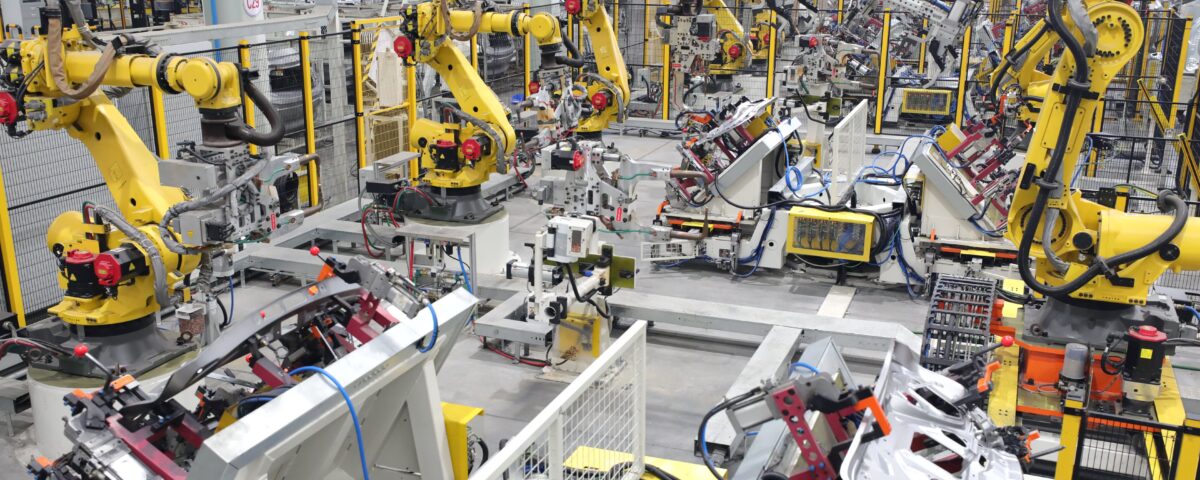USDCAD Analysis: Sideways Sentiment and Neutral Market Outlook
Tháng 4 18, 2025Market Sentiment Unveiled: The Dual Nature of Financial Decisions
Tháng 4 18, 2025Challenges and Transformations of the “Made in China 2025” Initiative
The “Made in China 2025” (MIC2025) initiative, introduced about a decade ago, was akin to China’s ambitious ambition to establish itself as a powerhouse in high-tech manufacturing and enhance technological self-sufficiency. While the program aimed to secure China’s status in the global industrial landscape and diminish dependency on foreign technologies, it has faced numerous hurdles that have somewhat obscured its original intent and vision.
Overestimation of Technological Self-Sufficiency
One of the program’s primary pitfalls was an overestimation of China’s capabilities in achieving technological self-reliance and innovation. The initiative anticipated a rapid advancement in several complex sectors, such as semiconductors, advanced machinery, and aerospace. This aggressive leap provoked concern among Western nations, especially the United States, which reacted with tariffs and trade restrictions starting in 2018. These measures stymied China’s growth in critical sectors and necessitated a reliance on foreign technology and expertise, fundamentally at odds with the objectives of MIC2025. The implications of these moves are profound, especially as highlighted in discussions around China’s strategic responses to trade tensions, where President Xi Jinping has sought to assure fair treatment for foreign companies, showcasing China’s commitment to being a favorable investment destination. Learn more about China’s strategic moves here.
International Backlash and Trade Wars
The ambitious push for dominance through the MIC2025 framework did not evade the backlash it triggered. The aggressive strategies associated with MIC2025 raised alarms regarding potential unfair practices, including state support and subsidies that could disrupt market dynamics. The U.S. government’s response evolved into a trade war that penalized Chinese exports and limited access to essential foreign components. Consequently, tensions escalated between the US and China, complicating the global trade ecosystem and casting doubt on China’s rise as a legitimate competitor.
The Challenge of Achieving Market-Driven Innovation
Despite substantial government investment in research and development (R&D), China’s innovation model experienced difficulties in harmonizing state-led directives with market-driven innovation. Critics highlighted that many innovations resulted from significant funding around state-owned entities rather than organic growth from competitive practices. Nevertheless, recent developments indicate an evolving approach, where the Chinese government has started empowering private enterprises, allowing for a more fluid and market-responsive innovation ecosystem.
Issues Surrounding Intellectual Property Rights
China’s reputation related to intellectual property (IP) has further complicated MIC2025’s global acceptance. Accusations of IP theft and enforced technology transfers cast a long shadow over China’s claims of homegrown innovation, leading to sustained skepticism from several international observers. Until these concerns are addressed, the legitimacy of the MIC2025 initiative remains under scrutiny.
Limited Global Competitiveness in Emerging Sectors
While notable advancements have been made, particularly in new-energy vehicles and information and communications technology (ICT), Chinese firms still encounter challenges in competing on a global stage. Critics suggest that China’s technological advancements often appear as incremental innovations rather than groundbreaking discoveries. Despite this, signs of growth and maturity in various sectors indicate that China is rising in certain niche markets, gradually expanding its international presence.
Recent Developments and Adjustments
In recent years, the MIC2025 initiative has adapted, reflecting a nuanced evolution of China’s industrial policies. The framework has been somewhat rebranded, emphasizing market dynamism and affordability while reducing rigid planning mandates. Corporate R&D investment is increasingly focusing on manufacturing and ICT sectors, demonstrating a connection between policy objectives and market innovation.
The strained relationship with the United States continues to cast a long shadow, characterized by ongoing tariffs and export controls, particularly concerning semiconductors and green technologies. In response, China is exploring its leverage in rare earth materials, crucial for high-tech manufacturing, to offset some of these restrictions.
Conclusion: An Adaptive Journey Forward
In summary, the “Made in China 2025” initiative illustrates a blend of ambition marred by misunderstandings and international skepticism. Key challenges lay in overestimating rapid technological advancements, sparking trade wars, and navigating complex market dynamics; however, China is progressively adapting its approach. By learning from previous setbacks, China aims to navigate its technological and industrial growth trajectory, embracing a more balanced model that fosters innovation without sole dependence on state control. As the country forges ahead, the evolution of MIC2025 remains a significant effort in reshaping its global manufacturing stature.

